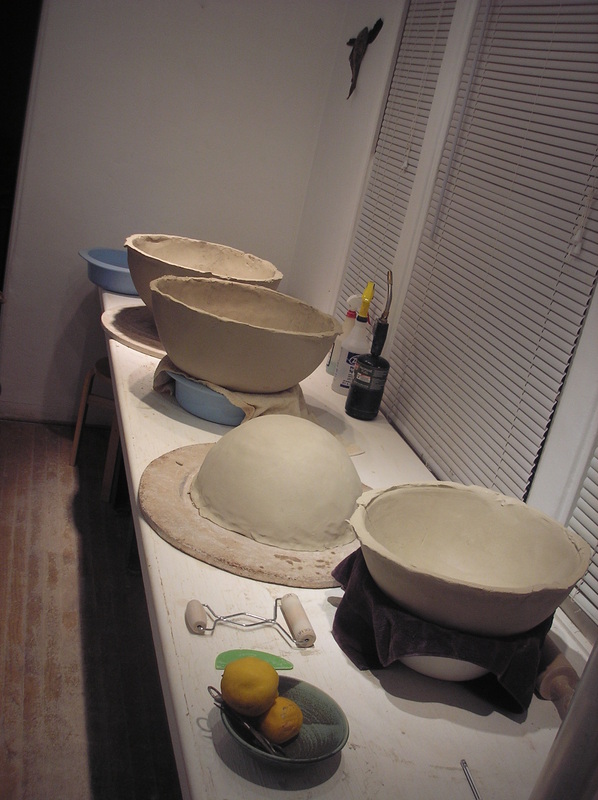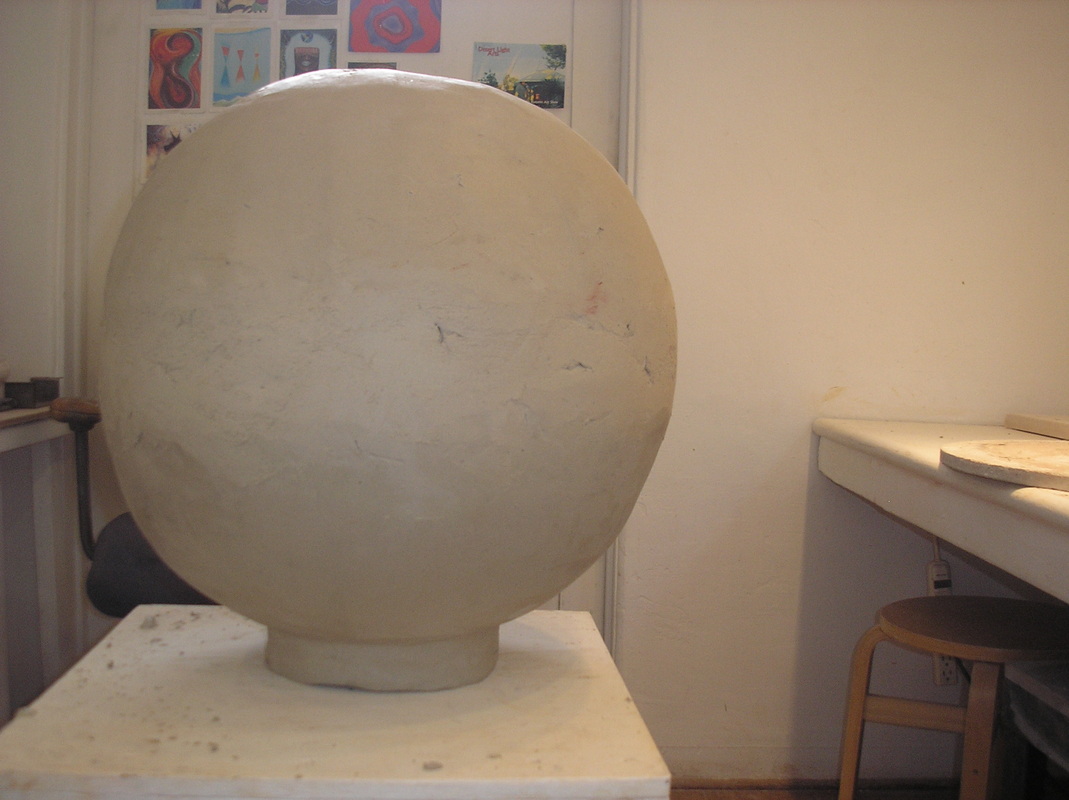Honey Pot
U.S. Honey Bee Losses at 30% for 2010-2011
Winter
May 23, 2011 — Total losses from managed
honey bee colonies nationwide were 30 percent from all causes for the 2010/2011
winter, according to the annual survey conducted by the U.S. Department of
Agriculture (USDA) and the Apiary Inspectors of America (AIA).
This is roughly similar to total losses reported in similar surveys done in the
four previous years: 34 percent for the 2009/2010 winter, 29 percent for
2008/2009; 36 percent for 2007/2008, and 32 percent for 2006/2007.
These statistics from Science News: http://www.sciencedaily.com/releases/2011/05/110523124214.htm
The Honey Bee Haven project reports that, "Bees are responsible for pollinating one in three bites of food we eat...and
they're in trouble. Since the mid-1990s, they've been dying off in droves around
the world." http://www.honeybeehaven.org/content/take-pledge
"Pollinators strongly influence ecological relationships, ecosystem conservation and stability, genetic variation in the plant community, floral diversity, specialization and evolution." reported by the Food & Agriculture Organization of the United Nations: ftp://ftp.fao.org/docrep/fao/012/i0842e/i0842e04.pdf
My vision: beehive sculptures on every roof.
You can view the evolution of Honey Pot here: https://docs.google.com/document/d/1ivZg158upRU3obWbXwlphJrqO3TwdK7pPHSNQCOcGOE/edit?usp=drive_web
I approached Eric Woods at The Clay Associates for guidance on the construction of this huge ceramic sculpture. Eric is a master ceramics artist who has supported my classes for years. http://www.clayassociates.org/eric/bio.html Eric agreed to help me.
However, he was concerned that the sculpture might get too hot and not be a good home to the bees. This sounded rational, so I added a chimney to the sculpture that would allow heat to rise & escape. He suggested that I try putting thermometers in several pots to check their room temperature. I did this with a variety of glaze hues, bisqued pots, all in the direct sunlight. I left a control thermometer laying in the sun. After my first hours of work, I returned to check them and found that the pots were all cooler than the control. This told me that the sculpture should not be too hot.
Winter
May 23, 2011 — Total losses from managed
honey bee colonies nationwide were 30 percent from all causes for the 2010/2011
winter, according to the annual survey conducted by the U.S. Department of
Agriculture (USDA) and the Apiary Inspectors of America (AIA).
This is roughly similar to total losses reported in similar surveys done in the
four previous years: 34 percent for the 2009/2010 winter, 29 percent for
2008/2009; 36 percent for 2007/2008, and 32 percent for 2006/2007.
These statistics from Science News: http://www.sciencedaily.com/releases/2011/05/110523124214.htm
The Honey Bee Haven project reports that, "Bees are responsible for pollinating one in three bites of food we eat...and
they're in trouble. Since the mid-1990s, they've been dying off in droves around
the world." http://www.honeybeehaven.org/content/take-pledge
"Pollinators strongly influence ecological relationships, ecosystem conservation and stability, genetic variation in the plant community, floral diversity, specialization and evolution." reported by the Food & Agriculture Organization of the United Nations: ftp://ftp.fao.org/docrep/fao/012/i0842e/i0842e04.pdf
My vision: beehive sculptures on every roof.
You can view the evolution of Honey Pot here: https://docs.google.com/document/d/1ivZg158upRU3obWbXwlphJrqO3TwdK7pPHSNQCOcGOE/edit?usp=drive_web
I approached Eric Woods at The Clay Associates for guidance on the construction of this huge ceramic sculpture. Eric is a master ceramics artist who has supported my classes for years. http://www.clayassociates.org/eric/bio.html Eric agreed to help me.
However, he was concerned that the sculpture might get too hot and not be a good home to the bees. This sounded rational, so I added a chimney to the sculpture that would allow heat to rise & escape. He suggested that I try putting thermometers in several pots to check their room temperature. I did this with a variety of glaze hues, bisqued pots, all in the direct sunlight. I left a control thermometer laying in the sun. After my first hours of work, I returned to check them and found that the pots were all cooler than the control. This told me that the sculpture should not be too hot.
Eric guided me through the whole process. He suggested that we use a high fire clay called Big White and had a kiln that would fire the work. We used a press to create 3/4" slabs. These were layered onto a prefired bowl that was 18" in diameter and cut to slightly overlap. I used a knife to merge the layers, then smoothed it down with fingers, & palm. I scrapped the surface with a straight edge tool, and finally ran over it all with a small roller.
After the two huge bowls were done, I needed to get them off the base bowl. I didn't want to wait days for them to dry enough to not stick, so I used a torch to dry them by hitting every bit of the surface. Then the two of us were able to flip it over and pop it out.
Next, Eric helped me to create its rim and we added that on.
Then, I repeated the process to make two more smaller bowls, a foot in diameter, for the second level. Finally, it was time for sleep.
The next day, they had dried enough to put them together into one giant ball. Theis required more scoring & slipping. We patted the edges with wood to smooth it.
It was so nerve racking to flip the bowls, but so exciting to put them together and so this vision becoming a reality. I could already imagine the bees living in it. Next, we planned where the legs should sit, then I built them as hollow tubes. I cut them at angles to fit the slope and numbered each one. Eric suggested using a board on top with a level to be sure it was all flat enough. Then, I had to torch them, score them, & slip them. In addition, we used an extra coil of clay around the outside of each for strength.
The little wings that stick out on the sides are like porches for the bees. They are meant as umbrellas to shield the rain & sun. They are a combination of sea gull beak, Asian architecture, antenna, and leaf that will curve down like the smile lines of an old man’s face to direct the rain flow.
Next, I drilled a drain hole to let out any water and Eric suggested that I add holes to the sides of the legs so in the future, I can put extention pipes into the hollow legs, and bolts through the small holes to keep them tight. The pipes can be of any length and can be adjusted to fit the pitch of any roof that I want to install it upon.
I made the sections to lock together. This joinery will keep it super stabile, even in high winds.
I built the third & final section as a cap that'll act as a chimney for any excess heat, while keeping out the rain with small nose like protrusions.
It is so fantastic to see my vision actualized. Again, I want to thank Eric Woods for his guidance and free sharing of facilities. Now, I need to wait a week for it to dry, and then he'll bisque fire it. After that, I plan to glaze it honey yellow with dribbles of orange & burgundy. My next step is to find a house in urban San Diego that will work as a site. A woman who works at my school, Diane Walker is an experienced bee keeper and has agreed to help me set-up the swarm. She even has a bee suit for me. I'm so excited!
I glazed it exactly as planned. We put it in a huge kiln to be glaze fired.
The firing went well! I was a little afraid that the orange & purple might be to much, but instead it is very subtle.
Next, I installed it on the roof of my house. It was perfectly stable. I began looking for a swarm of bees. My friend Diane Walker is an experienced bee handler. She has a bee suit for me and will help me to either attract or transfer a hive.
Sadly, I rent my house in City Heights. A few weeks after I installed the Honey Pot, I received a letter from our management company demanding that I remove the sculpture or I'd be fined.
Fortunately, I've found a new family who own their house and are excited to have it on their roof.
I also located a house with an unwanted bee swarm. My new plan is to save the bees from extermination by placing the sculpture near their current hive, place some queen bee hormone in it, and smoke out the current hive. I'm hoping that they'll move into the sculpture, then I'll move the sculpture to the new roof...so here we go!
One of my life long friends, Jack Bunting, is renovating the Oak Park house that he grew up in.
One of the problems is that a swarm of bees has built a hive on the back of the mother-in-law unit.
Jack has to get the bees out of there, but would prefer to re-home them rather than kill them.
Just suiting up was exciting for me. This is something I've wanted to try my whole life. I was exhilarated & deathly scared at the same time.
Now, it was time to go into that pit and start clipping branches away from the hive. Thanks to Jack who took pics.
VIDEO of bees being introduced to the Honey Pot.
Huge thanks to Diane Walker who is an experienced bee handler and has generously guided me through this process.
Three weeks have passed since I placed the sculpture.
Diane joined me to return and get a closer look at the situation. We added some honey comb and honey to the interior of the sculpture in hopes to make it more appealing to the bees. One immediately landed and started enjoying the honey.
Three weeks have passed since I placed the sculpture.
Diane joined me to return and get a closer look at the situation. We added some honey comb and honey to the interior of the sculpture in hopes to make it more appealing to the bees. One immediately landed and started enjoying the honey.
Our next step will be to suit up and use a hammer & chisel to knock out a couple bricks and open a doorway to the hive. We'll scoop out the honeycomb and hopefully capture the queen. Once this is done, we can transport the sculpture with the hive to its new location.
Sadly, I was not able to pull this off. The fireplace bricks were too thick. I left the sculpture there for several days, but the bees were already happy in the fireplace and they are still there today.
More than a year passed, and I've moved to a new house with a huge backyard. I had planned to attempt to introduce a swarm into the sculpture this summer. Today is Easter. This morning, my wife & I went out back to hide some eggs for our sons to hunt, but instead, this is what I found:
click here
Sadly, I was not able to pull this off. The fireplace bricks were too thick. I left the sculpture there for several days, but the bees were already happy in the fireplace and they are still there today.
More than a year passed, and I've moved to a new house with a huge backyard. I had planned to attempt to introduce a swarm into the sculpture this summer. Today is Easter. This morning, my wife & I went out back to hide some eggs for our sons to hunt, but instead, this is what I found:
click here

